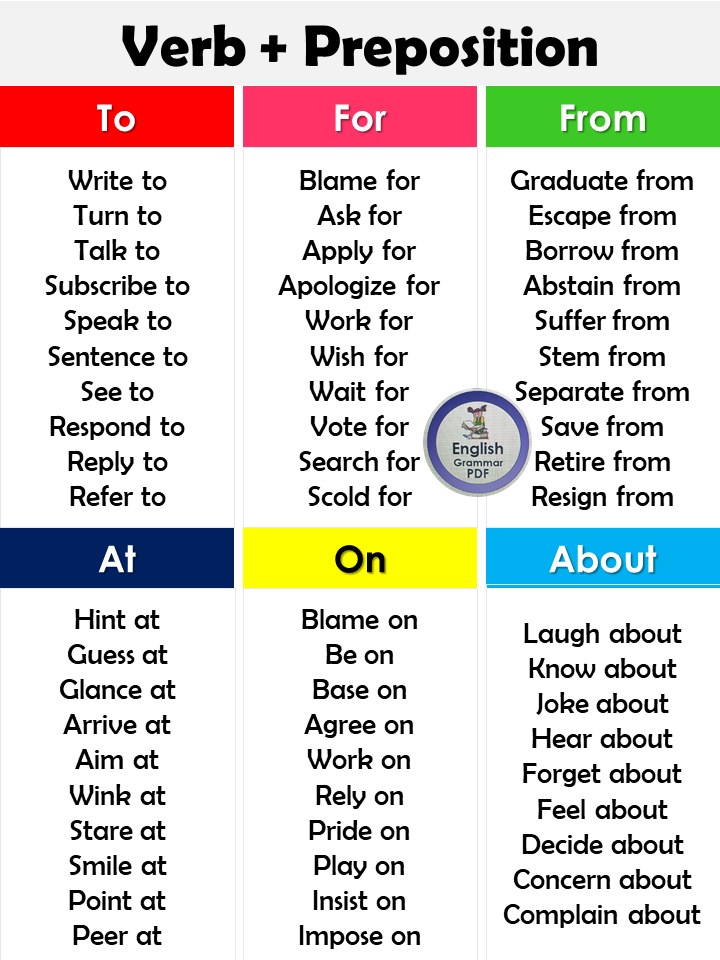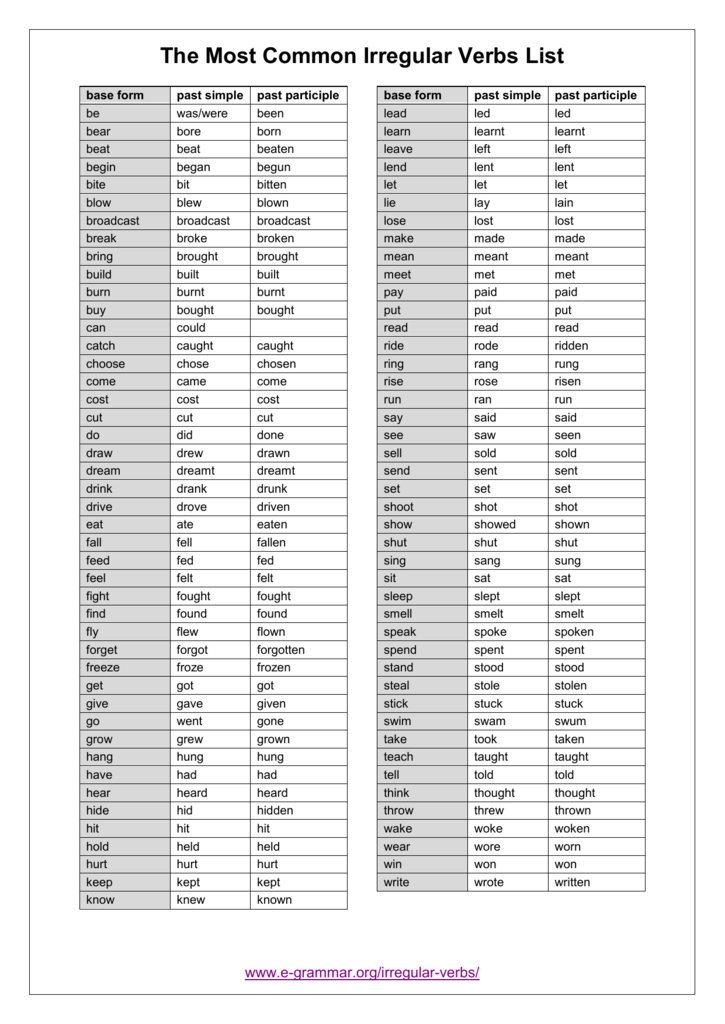Verb In English Grammar In Hindi Pdf Adverbs perform a wide range of functions. They typically modify verbs , adjectives , or other adverbs . They can also indicate a relationship between clauses or sentences . A phrase typically serves the same function as a word from some particular word class. For example, my very good friend Peter is a phrase that can be used in a sentence as if it were a noun, and is therefore called a noun phrase.
Similarly, adjectival phrases and adverbial phrases function as if they were adjectives or adverbs, but with other types of phrases, the terminology has different implications. Pronouns are a relatively small, closed class of words that function in the place of nouns or noun phrases. They include personal pronouns, demonstrative pronouns, relative pronouns, interrogative pronouns, and some others, mainly indefinite pronouns. The full set of English pronouns is presented in the following table.
Nonstandard, informal and archaic forms are in italics. Nouns, verbs, adjectives, and adverbs form open classes – word classes that readily accept new members, such as the noun celebutante , and other similar relatively new words. The others are considered to be closed classes. For example, it is rare for a new pronoun to enter the language. Determiners, traditionally classified along with adjectives, have not always been regarded as a separate part of speech. Interjections are another word class, but these are not described here as they do not form part of the clause and sentence structure of the language.
Verb forms, as well as the verb itself, are an important aspect of English. The term verb derives from the Latin verbum, which means "word." It gets its name from the fact that it is the most significant section of a sentence. It's a word that describes or asserts something about someone or something. To construct a tense, different forms of verbs are required. We've compiled a comprehensive collection of verbs, replete with past tense and use examples. A word or phrase used to link parts of a text so that the reader finds it clear to understand.
Typical cohesive devices are pronouns ; prepositions, conjunctions, and adverbs (to show contrast, addition, ordering, etc.); and ellipsis . The copula be, along with the modal verbs and the other auxiliaries, form a distinct class, sometimes called "special verbs" or simply "auxiliaries". For more details of this, see do-support.
Friends, we have given it in PDF form which you can easily download. Verb has three forms V1, V2, V3 and its fourth form is V4 is ing. An irregular verb is a verb in which the past tense is not formed by adding the usual '-ed' ending.
This list contains all the irregular verbs of the English language. Each entry includes the base or bare infinitive first, followed by the simple past form and past participle form . It is important to study irregular verb forms when speaking or writing because they are used incorrectly in most situations. Marked revision tests on tenses, going to, passive voice, conditionals, reported speech, time clauses, modal verbs, imperative and gerunds vs infinitives. Parts of speech are the basic categories of words according to their function in a sentence. It is a category to which a word is assigned in accordance with its syntactic functions.
English has eight main parts of speech, namely, Nouns, Pronouns, Adjectives, Verbs, Adverbs, Prepositions, Conjunctions & Interjections. In grammar, the parts of speech,also called lexical categories, grammatical categories or word classesis a linguistic category of words. For details of possible patterns, see English clause syntax.
See the Non-finite clauses section of that article for verb phrases headed by non-finite verb forms, such as infinitives and participles. Most of what are often referred to as verb tenses in English are formed using auxiliary verbs. The auxiliaries shall and should sometimes replace will and would in the first person. For the uses of these various verb forms, see English verbs and English clause syntax. The word that as a relative pronoun is normally found only in restrictive relative clauses . It can refer to either persons or things, and cannot follow a preposition.
For example, one can say the song that I listened to yesterday, but the song to which I listened yesterday. The relative pronoun that is usually pronounced with a reduced vowel , and hence differently from the demonstrative that . If that is not the subject of the relative clause, it can be omitted . The second-person forms such as you are used with both singular and plural reference. In the Southern United States, y'all is used as a plural form, and various other phrases such as you guys are used in other places. You can also be used as an indefinite pronoun, referring to a person in general , compared to the more formal alternative, one (reflexive oneself, possessive one's).
More generally, the ending can be applied to noun phrases (as in the man you saw yesterday's sister); see below. The possessive form can be used either as a determiner (John's cat) or as a noun phrase (John's is the one next to Jane's). Modern English has largely abandoned the inflectional case system of Indo-European in favor of analytic constructions. The personal pronouns retain morphological case more strongly than any other word class . For other pronouns, and all nouns, adjectives, and articles, grammatical function is indicated only by word order, by prepositions, and by the "Saxon genitive or English possessive" (-'s).
Helping verbs wo words hote hai jo sentence ke main verb ki help karte hai. Inhe English mein 'Auxiliary verbs' bhi kaha jata hai. Mainly 3 types ke helping verbs hote hai, jinke aage aur multiple forms hote hai. Helping verbs jane se pehle aiye 3 main helping verbs aur unke multiple forms jaan le. Ab hum aise hi kuch helping verbs ki English to Hindi verbs list dekhenge.
A regular word, such as a noun or a verb, has inflections that follow the normal rules. For instance, the noun cat has a regular plural with -s , and the verb to love forms its tenses in the normal way (loved; loving). Find out more about regular and irregular verbs. A clause typically contains a subject and a predicate (a verb phrase in the terminology used above; that is, a verb together with its objects and complements).
A dependent clause also normally contains a subordinating conjunction . Prepositions form a closed word class, although there are also certain phrases that serve as prepositions, such as in front of. A single preposition may have a variety of meanings, often including temporal, spatial and abstract. Many words that are prepositions can also serve as adverbs.
Examples of common English prepositions are of, in, on, over, under, to, from, with, in front of, behind, opposite, by, before, after, during, through, in spite of or despite, between, among, etc. There are also many adverbs that are not derived from adjectives, including adverbs of time, of frequency, of place, of degree and with other meanings. Some suffixes that are commonly used to form adverbs from nouns are -ward (as in homeward) and -wise .
The word what can be used to form a free relative clause – one that has no antecedent and that serves as a complete noun phrase in itself, as in I like what he likes. The words whatever and whichever can be used similarly, in the role of either pronouns or determiners . When referring to persons, who (and whom) can be used in a similar way . In Old and Middle English, the roles of the three words were different from their roles today.
A small holdover of this is the ability of relative whose to refer to non-persons (e.g., the car whose door won't open). Noun phrases are phrases that function grammatically as nouns within sentences, for example as the subject or object of a verb. Most noun phrases have a noun as their head.
Many common suffixes form nouns from other nouns or from other types of words, such as -age , -hood , and so on, although many nouns are base forms not containing any such suffix . Nouns are also often created by conversion of verbs or adjectives, as with the words talk and reading . 9.LearnSikhna (सीखना)I have learnt English.
Aasha hai ye list aapki kisi na kisi tarah madad zaroor karegi. Aapko aur better tarah se English improve karne mein toh pakka help karegi. Infinitives verbs ek basic form of verb hai, jiske saath humesha'to' shabd ka prayog kiya jata hai.
Jaise ' To dance', ' To Think', 'To learn' etc. Niche table mein kuch aise basic form of verbs hai jinke ke saath 'To' shabd ka prayog hota hai. Jisse wo ban jate hai Infinitives Verbs.| English to Hindi verbs list. This pdf have not Hindi meaning it contains 1000 verbs list and this pdf is published by getready learning classes hope you will like this pdf and share with others too. Further, these pronouns and a few others have distinct possessive forms, such as his and whose.
By contrast, nouns have no distinct nominative and objective forms, the two being merged into a single plain case. For example, chair does not change form between "the chair is here" and "I saw the chair" . Possession is shown by the clitic -'s attached to a possessive noun phrase, rather than by declension of the noun itself. A preposition is usually used with a noun phrase as its complement. A preposition together with its complement is called a prepositional phrase.
Examples are in England, under the table, after six pleasant weeks, between the land and the sea. Certain adjectives are classed as ungradable. These represent properties that cannot be compared on a scale; they simply apply or do not, as with pregnant, dead, unique. Consequently, comparative and superlative forms of such adjectives are not normally used, except in a figurative, humorous or imprecise context. Similarly, such adjectives are not normally qualified with modifiers of degree such as very and fairly, although with some of them it is idiomatic to use adverbs such as completely.
Another type of adjective sometimes considered ungradable is those that represent an extreme degree of some property, such as delicious and terrified. The third-person singular forms are differentiated according to the sex of the referent. For example, she is used to refer to a female person, sometimes a female animal, and sometimes an object to which female characteristics are attributed, such as a ship or a country.
A male person, and sometimes a male animal, is referred to using he. (See Gender in English.) The word it can also be used as a dummy subject, in sentences like It is going to be sunny this afternoon. English determiners constitute a relatively small class of words. There are also many phrases that can play the role of determiners. Countable nouns generally have singular and plural forms.
In most cases the plural is formed from the singular by adding -s , although there are also irregular forms (woman/women, foot/feet, etc.), including cases where the two forms are identical . For more details, see English plural. Certain nouns can be used with plural verbs even though they are singular in form, as in The government were ...
This is a form of synesis; it is more common in British than American English. See English plural § Singulars with collective meaning treated as plural. A verb, from the Latin verbum meaning word, is a word that in syntax conveys an action, an occurrence, or a state of being.
In the usual description of English, the basic form, with or without the particle to, is the infinitive. In many languages, verbs are inflected to encode tense, aspect, mood, and voice. The pronouns, verb forms, and determiners which are used by a speaker to refer to other people or things, for instance, he, she, it, their, it has, they were. Compare with first person, second person. The pronouns, verb forms, and determiners which are used to speak to someone, for instance, you, your, you slept. Compare with first person, third person.
A change in the form of a word to show its grammatical function in a sentence, for example the tense of a verb (e.g. I walked; she had) or the plural of a noun (e.g. potatoes; children). Read more about verb tenses and forming plurals of nouns. The pronouns, verb forms, and determiners which are used by a speaker to identify himself or herself, or to refer to a group including himself or herself, for instance, I, we, my, we were, I went.
Compare with second person, third person. And Past Participle forms, most of the verbs have -d, -ed and -ied suffixes, while some verbs do not follow this rule. These verbs which do not follow this rule and whose past tenses are completely different from the others are called irregular verbs. Determiners are used in the formation of noun phrases .
Many words that serve as determiners can also be used as pronouns (this, that, many, etc.). English grammar is the way in which meanings are encoded into wordings in the English language. This includes the structure of words, phrases, clauses, sentences, and whole texts. Sir please write an article on most commonly used phrasal verbs with hindi examples. To be honest sir you do really work hard for us . You can get verb forms list with Hindi meaning from the below link but not in pdf format.




















































